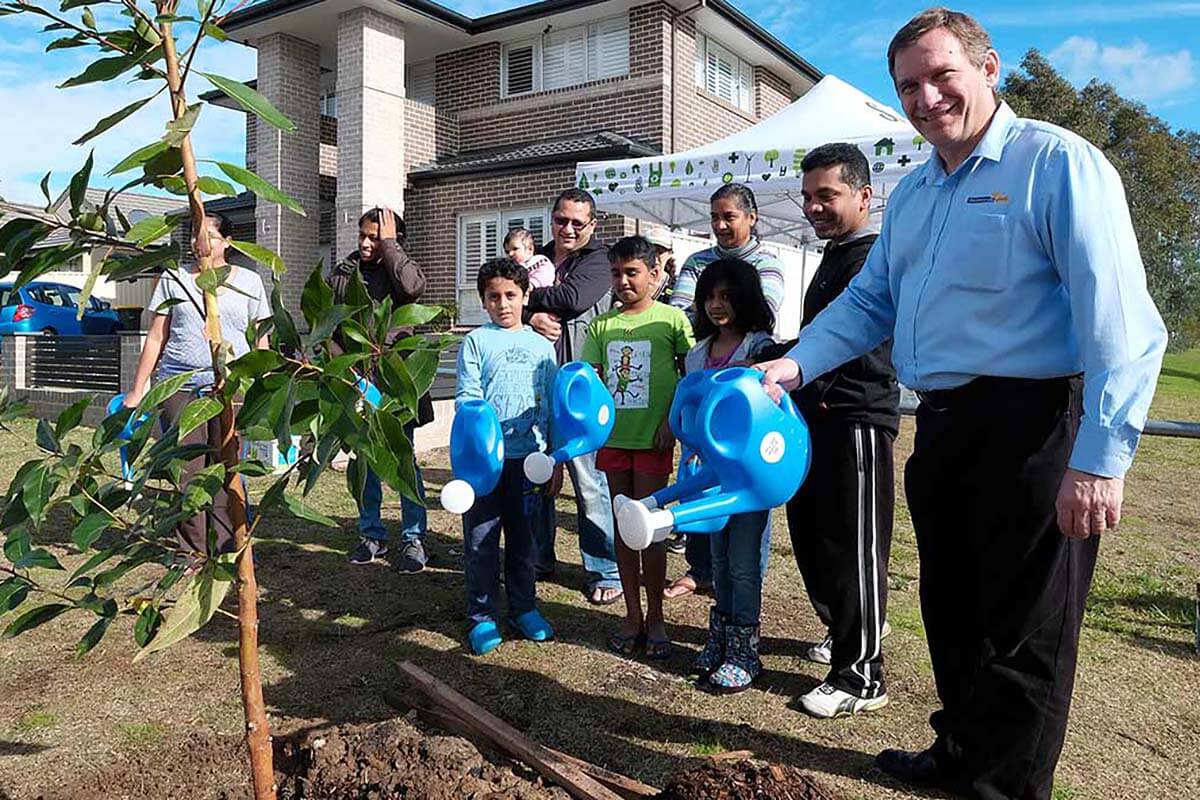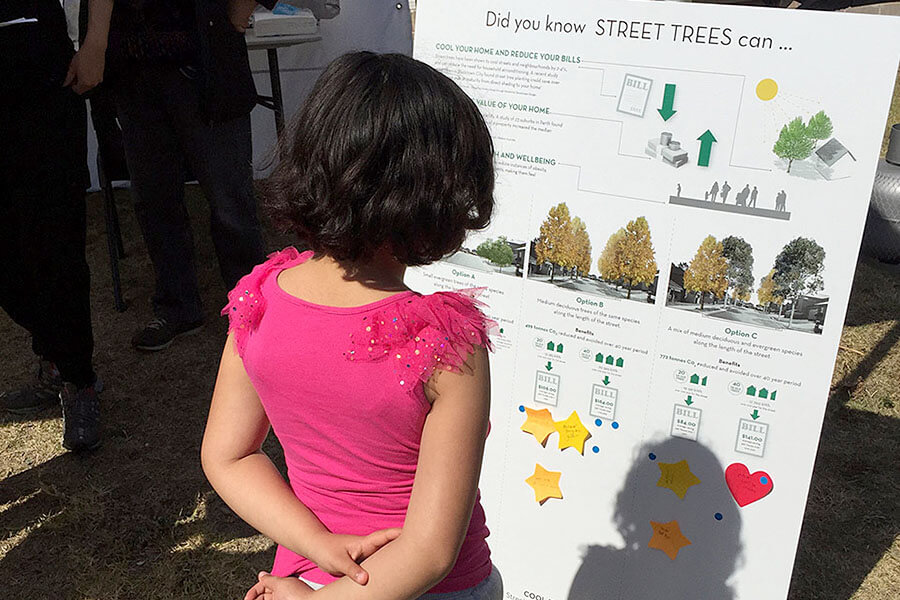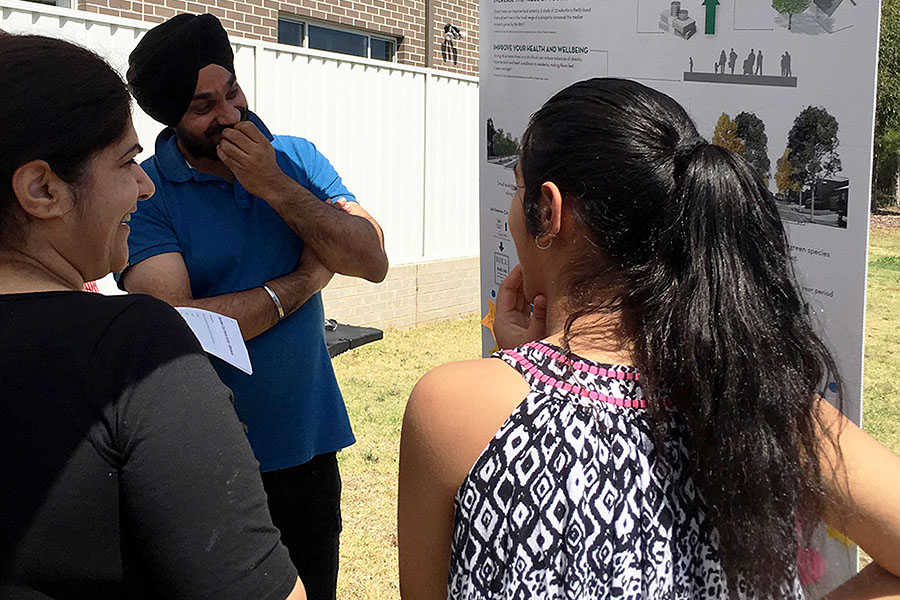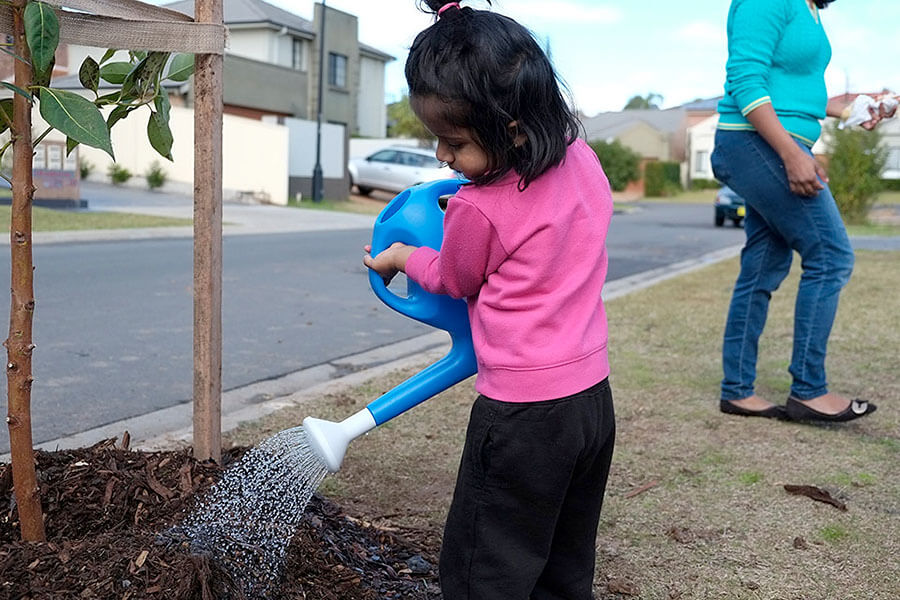Collaborating on a shared vision for street tree planting
A pilot project focusing on community decision-making about street trees has demonstrated how residents can work together to make their local environment cooler in summer, and improve their climate resilience.
Supported by Blacktown City Council, a “Cool Streets” pilot project was conducted in Blacktown. This involved members of the community coming together to make decisions about planting trees in their streets.
The project implemented the Cool Streets Method, which is based on research about the benefits of street trees, particularly in regard to cooling urban areas and reducing emissions of carbon dioxide. The method empowers residents to make decisions about which trees to plant and where.
The pilot is part of the wider Cool Streets initiative by Blacktown City Council, aimed at reducing rising urban heat due to climate change. Urban heat is one of the risks identified in the Blacktown Community Strategic Plan.
Building on research findings
Research undertaken by Dr Libby Gallagher at the University of Sydney found that modification of a neighbourhood’s street trees could achieve almost seven times more carbon dioxide reductions than a standard street tree design, and reduce household electricity bills by over $400 a year.
Building on this research, a pilot project for Blacktown was developed for two existing streets that did not have street trees. The aim was to test if a new tree-planting implementation process – that involved collaboration with residents to develop a design for their street – could improve environmental benefits as well as economic and social outcomes for a local community.
Engaging the community in the decision-making
Two phases of community engagement were organised, aiming to build consensus for street tree planting and strengthen neighbourhood relationships:
- Phase 1 included a process of information sharing and preference gathering.
- Phase 2 involved detailed design layouts, based on the community’s preferences, showing the environmental and economic benefits that could be gained through different sizes and species of trees.
In both instances, support was measured through surveys, illustrating the majority preference. This transparent process changed people’s pre-existing opinions and fostered a shared majority view. Feedback from residents showed how much they valued being heard, and enjoyed being part of making environmental decisions for their street.
The process encouraged residents to reach beyond their own backyard and shape their neighbourhood’s future liveability.
Providing a model for other applications
The success of the pilot project’s collaborative design and community consultation methods means these can now be applied to other street plantings and new subdivisions to mitigate the urban heat-island effect.
According to Australian Institute of Landscape Architects (AILA) National President Linda Corkery, the project was exemplary in its capacity to build on knowledge about climate extremes, alongside encouraging people to be engaged and giving them agency in the process.
Cool Streets is a road map showing the way forward for municipalities suffering from similar problems across Australia, while allowing for regional variation.
Linda Corkery, AILA National President
Lessons learnt
Cool Streets is an outstanding example of collaborative design and community engagement where the process served as an education tool for a community who were resistant to the inclusion of trees in their neighbourhood.
A shared understanding empowered the community, through their greater appreciation of the issues associated with climate extremes and the cost benefits associated with tree planting, including the relationship to reduced utility costs.
The Cool Streets consultation model is an excellent one for other communities.



